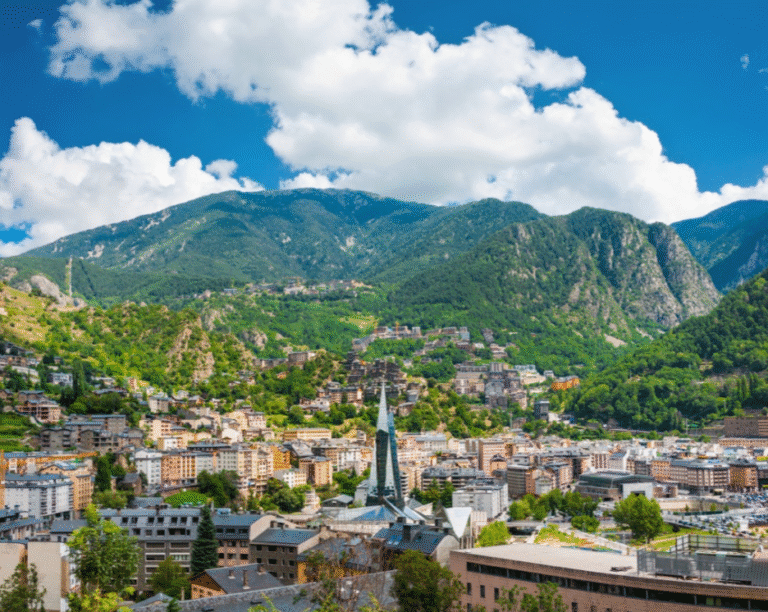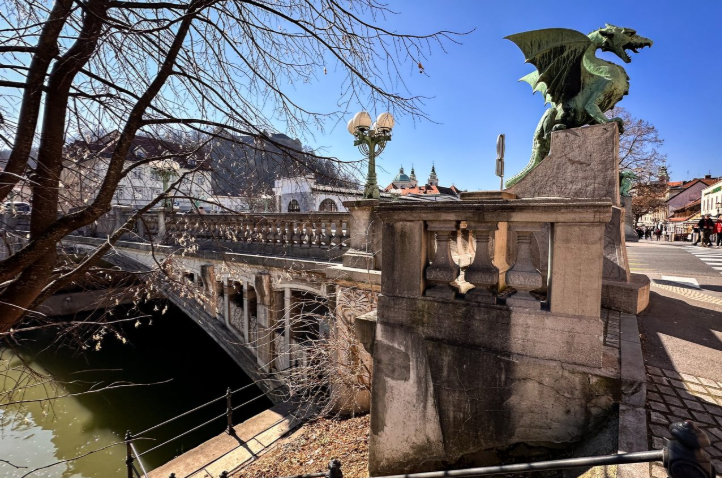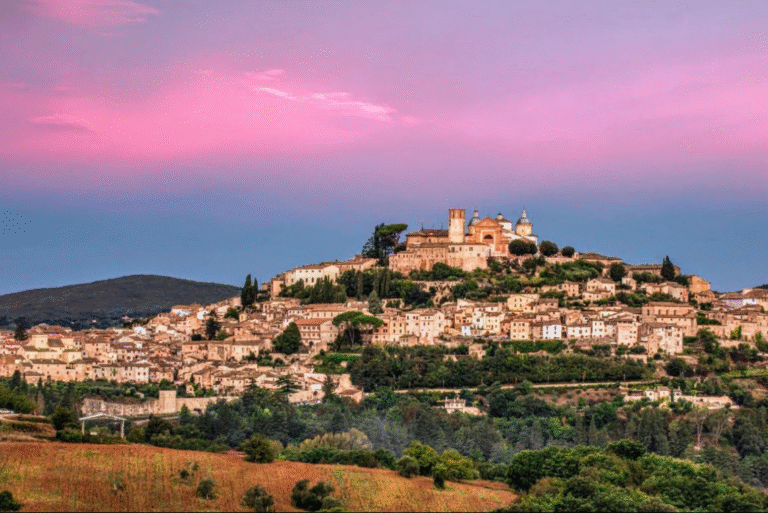Lisbon’s Seven Hills: Tram Rides, Fado Music, and Seaside Sunsets
Lisbon, the sun-kissed capital of Portugal, is a city defined by its dramatic hills, colorful neighborhoods, and deep cultural traditions. Spread across seven hills that rise from the Tagus River, the city’s landscape offers breathtaking views, winding cobblestone streets, and historic tram rides that snake through its vibrant districts. Lisbon’s charm lies in its effortless blend of old and new, where medieval castles stand alongside modern art spaces, and traditional Fado music fills the air in centuries-old taverns. The city’s unique atmosphere is shaped by its rich maritime history, its soulful melodies, and its love for fresh seafood and pastel de nata. From the iconic yellow trams climbing the steep streets to the golden hues of a sunset over the Atlantic, Lisbon is a city that invites exploration, romance, and discovery. Whether wandering through the historic alleys of Alfama, enjoying a meal in the bustling markets, or taking in the city’s panoramic views, Lisbon’s seven hills offer a dynamic and unforgettable journey through one of Europe’s most enchanting capitals.

The Charm of Lisbon’s Hills and Historic Tram Rides
Lisbon’s geography is one of its defining features, with its seven hills creating a cityscape unlike any other in Europe. The best way to navigate these steep streets and hidden stairways is by hopping onto one of Lisbon’s historic yellow trams. The most famous of these is Tram 28, which winds through the city’s oldest neighborhoods, offering a scenic ride past iconic landmarks such as the Sé Cathedral, São Jorge Castle, and the pastel-colored houses of Graça. The trams rattle through narrow alleyways and climb steep inclines, giving passengers a glimpse into Lisbon’s daily life and architectural beauty.
Each of Lisbon’s hills has its own personality and breathtaking viewpoints, known as miradouros. One of the most spectacular is Miradouro da Senhora do Monte, which offers a sweeping panoramic view of the city’s terracotta rooftops and the distant Tagus River. Another must-visit spot is Miradouro de Santa Catarina, where locals and visitors gather at sunset to enjoy the golden light reflecting off the water, accompanied by street musicians and the laid-back energy of the city. These viewpoints, scattered across Lisbon’s hills, provide the perfect setting to pause, take in the scenery, and feel the pulse of the city from above.
Exploring Lisbon’s hills on foot is an adventure in itself, with each step leading to hidden courtyards, azulejo-covered facades, and historic staircases that connect different levels of the city. The Elevador de Santa Justa, an elegant neo-Gothic iron lift, is another unique way to navigate Lisbon’s elevation, offering a shortcut from Baixa to the Carmo Convent ruins while providing stunning views of the surrounding streets. The charm of Lisbon’s hills is not just in their beauty, but in the way they shape the city’s rhythm, encouraging slow exploration and moments of unexpected discovery.

The Soulful Sounds of Fado: Lisbon’s Musical Heartbeat
No visit to Lisbon is complete without experiencing the deep, melancholic sounds of Fado, Portugal’s traditional music that captures the essence of longing, love, and nostalgia. Born in the narrow streets of Alfama, Fado is more than just a genre—it is an expression of the Portuguese soul, telling stories of sailors, lost loves, and the passage of time. The haunting melodies, played on Portuguese guitars, create an atmosphere of intimacy and emotion that lingers long after the music stops.
The best way to experience Fado is in a traditional Fado house, where dim lighting, rustic decor, and heartfelt performances transport listeners to another era. One of the most iconic venues is Clube de Fado, where talented singers perform in an intimate setting, preserving the authenticity of the art form. Another legendary spot is A Baiuca, a small, family-run restaurant where locals and visitors come together over a meal while being serenaded by soulful voices. Bairro Alto, known for its lively nightlife, also hides several Fado taverns where spontaneous performances can turn an ordinary evening into a magical memory.
Fado is so deeply ingrained in Lisbon’s identity that it has been recognized by UNESCO as an Intangible Cultural Heritage of Humanity. Visitors can learn more about its history at the Fado Museum, which traces the evolution of the genre and its most legendary performers. Even outside of Fado houses, the music drifts through Lisbon’s streets, played by buskers in hidden corners and echoing from open windows. The raw emotion of Fado, combined with Lisbon’s old-world charm, creates an atmosphere that is both deeply nostalgic and incredibly beautiful.

Sunsets and Seaside Splendor: Lisbon’s Waterfront Magic
Lisbon’s connection to the sea is woven into its history, culture, and daily life. As a city that once launched great explorers into the unknown, its waterfront continues to be a place of inspiration, relaxation, and breathtaking views. One of the best ways to experience Lisbon’s maritime beauty is by taking a walk along the Tagus River, where historic monuments and modern architecture blend seamlessly against the backdrop of the shimmering water.
The Belém district, located along the river, is home to some of Lisbon’s most iconic landmarks. The Belém Tower, a stunning fortress that once guarded the city’s harbor, stands as a symbol of Portugal’s Age of Discovery. Nearby, the Monument to the Discoveries pays tribute to the great navigators who set sail from Lisbon’s shores, shaping the course of world history. A visit to Belém is incomplete without stopping at Pastéis de Belém, the legendary bakery that has been serving the city’s famous custard tarts since 1837. The combination of crispy pastry, creamy filling, and a dusting of cinnamon is a taste of Lisbon’s culinary heritage that is not to be missed.
For a different perspective of the city, a sunset cruise on the Tagus offers an unforgettable experience. As the boat glides past the 25 de Abril Bridge, often compared to San Francisco’s Golden Gate, and the Christ the King statue, the city is bathed in warm golden light, creating a scene straight out of a painting. Watching the sun set over the water, with Lisbon’s hills glowing in the fading light, is one of the most romantic and memorable experiences the city has to offer.
Beyond the city center, the seaside town of Cascais, just a short train ride away, offers a perfect coastal escape. With its sandy beaches, charming harbor, and fresh seafood restaurants, it provides a taste of Lisbon’s relaxed, sun-drenched lifestyle. The nearby cliffs of Cabo da Roca, the westernmost point of mainland Europe, offer dramatic ocean views and a sense of standing at the edge of the world. Whether exploring the bustling riverfront or seeking tranquility by the sea, Lisbon’s connection to the water adds another layer of magic to its already enchanting landscape.
Lisbon’s seven hills, historic trams, soulful music, and breathtaking waterfront create a city that is as poetic as it is vibrant. It is a place where history and modernity dance together, where every corner holds a story, and where the golden light of sunset transforms the city into a dreamscape. From the lively streets of Alfama to the grandeur of Belém, from the echoes of Fado to the taste of fresh seafood by the sea, Lisbon offers an experience that is both timeless and unforgettable. Whether exploring its winding streets, taking in panoramic views, or simply enjoying the warmth of its people, Lisbon invites visitors to slow down, savor the moment, and fall in love with its unique beauty.







